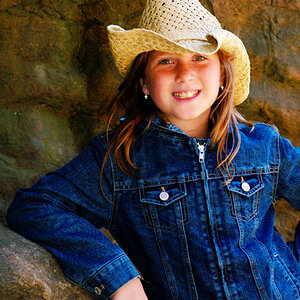JustJazzie
Been spending a lot of time on here!
- Joined
- Jan 21, 2013
- Messages
- 3,793
- Reaction score
- 1,732
- Location
- Bailey, Colorado
- Can others edit my Photos
- Photos OK to edit
Last night, this article came across my screen. Ill link, but don't bother looking at it.
The headline is "Society promotes unrealistic standards of beauty. These 'before and after' images of photoshopped celebs are proof of this."
Read More: 30+ Before & After Images Of Celebs Reveal Society’s Unrealistic Standards Of Beauty
I've noticed many people chiming in and blaming photoshop for our modern view of beauty and what it should be. And know that many are against "too much" photo shop- or even "photo shop" at all.
But it did leave me wondering- before photography the main artistic mediums were what? Painting and drawing, unless I am mistaken. (I admit my art history knowledge is limited)
Do you think people were upset back then that the (non specific) queen was painted without (m/any) wrinkles?
Do we really believe that The Mona Lisa (whoever she was) had perfectly porcelain skin?
How many antique nude paintings included celluite to its full degree ?
Do we really believe that whatever imperfections were included or excluded in the final piece were not at the artists discretion?
Obviously, the medium has changed. And our idea of beauty has evolved. How far do you think they took these modifications in classic art? Do you feel it should have any bearing on how we view ethics in our artistic leeway?
Editing to add an example:
http://www.marileecody.com/gloriana/elizabethrainbow1.jpg
This links to a painting of Queen Elizabeth I of England.
The portrait, according to my research was taken when she was in her late 60's. Yet she is portrayed youthful, and "iconic."
In this one, she is about 42. Yes there is change between the two, but the change doesn't appear to be "aging" in a physical sense.
Queen Elizabeth I - National Portrait Gallery
I guess what I am really wondering is "why are photographic artists being held to a "higher moral standard" so to speak, when compared to artists of other mediums?"
The headline is "Society promotes unrealistic standards of beauty. These 'before and after' images of photoshopped celebs are proof of this."
Read More: 30+ Before & After Images Of Celebs Reveal Society’s Unrealistic Standards Of Beauty
I've noticed many people chiming in and blaming photoshop for our modern view of beauty and what it should be. And know that many are against "too much" photo shop- or even "photo shop" at all.
But it did leave me wondering- before photography the main artistic mediums were what? Painting and drawing, unless I am mistaken. (I admit my art history knowledge is limited)
Do you think people were upset back then that the (non specific) queen was painted without (m/any) wrinkles?
Do we really believe that The Mona Lisa (whoever she was) had perfectly porcelain skin?
How many antique nude paintings included celluite to its full degree ?
Do we really believe that whatever imperfections were included or excluded in the final piece were not at the artists discretion?
Obviously, the medium has changed. And our idea of beauty has evolved. How far do you think they took these modifications in classic art? Do you feel it should have any bearing on how we view ethics in our artistic leeway?
Editing to add an example:
http://www.marileecody.com/gloriana/elizabethrainbow1.jpg
This links to a painting of Queen Elizabeth I of England.
The portrait, according to my research was taken when she was in her late 60's. Yet she is portrayed youthful, and "iconic."
In this one, she is about 42. Yes there is change between the two, but the change doesn't appear to be "aging" in a physical sense.
Queen Elizabeth I - National Portrait Gallery
I guess what I am really wondering is "why are photographic artists being held to a "higher moral standard" so to speak, when compared to artists of other mediums?"
Last edited:


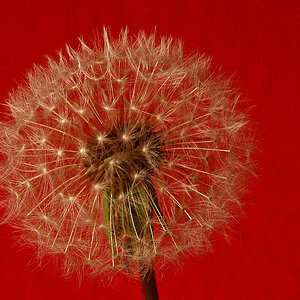
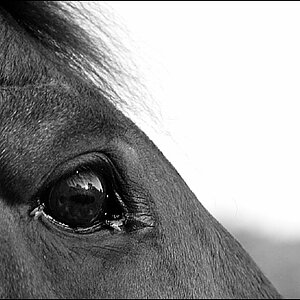
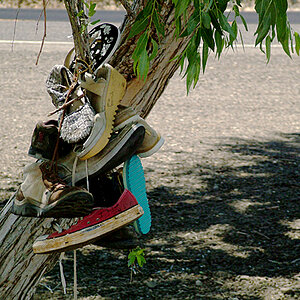

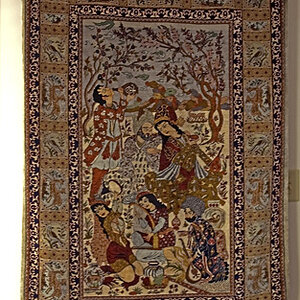


![[No title]](/data/xfmg/thumbnail/34/34344-0b42e0e92ad436e6710a1b9c4585d6df.jpg?1619736379)
